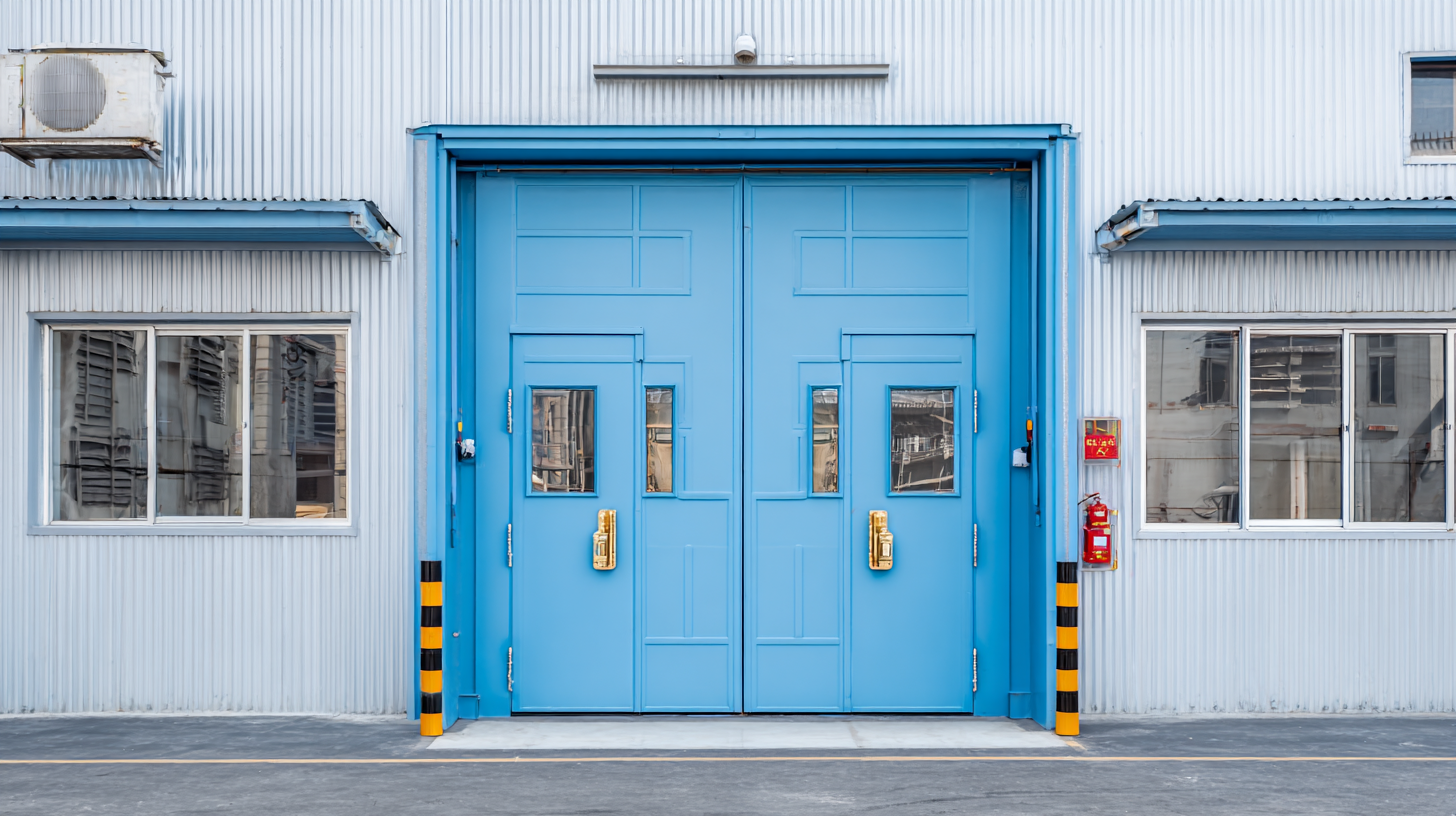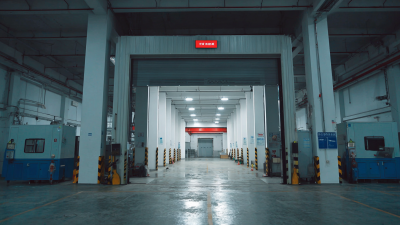The importance of workplace security and efficiency is underscored by the rising demand for robust protective solutions, particularly in industries that face heightened risks. Industrial steel doors have emerged as a critical component in enhancing both security and operational performance across various sectors. According to a report by the Occupational Safety and Health Administration (OSHA), workplaces utilizing fortified security measures, including industrial steel doors, experience up to a 50% reduction in theft and unauthorized access incidents, significantly mitigating potential losses. Moreover, the use of these durable doors improves energy efficiency by providing better insulation and reducing heating and cooling costs. A recent survey by the National Safety Council (NSC) revealed that companies with high-security measures, such as industrial steel doors, reported productivity increases of 15% due to reduced interruptions and safer environments for employees. As businesses increasingly prioritize security and efficiency, the role of industrial steel doors becomes paramount in safeguarding assets and optimizing operational workflows.

Industrial steel doors play a crucial role in enhancing workplace safety measures. These robust barriers are designed to withstand high-impact forces, protect against unauthorized access, and contain potential hazards, making them an essential component in industrial environments. By effectively separating different areas of operation, steel doors help minimize risks associated with machinery and hazardous materials, ensuring that employees work in a secure environment.
When considering the implementation of industrial steel doors, it’s important to proactively assess your facility's specific needs. Tip 1: Conduct a thorough risk assessment to identify areas that would benefit from reinforced security. Tip 2: Ensure that the selected doors comply with industry standards and regulations to guarantee maximum protection. Additionally, regular maintenance checks should be established to keep the doors in optimal condition, preventing wear that could compromise safety.
Another critical aspect is the integration of technology with industrial steel doors. Tip 3: Consider installing access controls or monitoring systems that complement the physical security provided by the doors. This allows for better tracking of who enters sensitive areas and can alert security personnel to unauthorized access attempts, thereby enhancing overall workplace safety.

The workplace security landscape is evolving, with industrial steel doors emerging as a crucial component in enhancing safety and operational efficiency. With the global doors market expected to reach USD 98.32 billion by 2030, businesses recognize the importance of investing in durable and secure infrastructure. Industrial steel doors not only provide robust protection against unauthorized access but also contribute to efficient workflow management by minimizing downtime caused by security breaches.
When assessing the efficiency benefits of industrial steel doors, it's essential to consider their long-lasting nature and low maintenance requirements. According to industry insights, businesses that prioritize the installation of high-quality steel doors experience fewer disruptions and enhanced productivity levels. This investment in security technologies not only safeguards assets but also fosters a safe environment for employees, boosting morale and efficiency.
**Tip:** When considering industrial steel doors for your business, evaluate the specific security and efficiency needs. Choose doors with enhanced thermal insulation properties to improve energy efficiency and reduce costs. Emphasizing a proper installation process will maximize their benefits, ensuring they perform effectively and align with workplace safety regulations.
When selecting industrial steel doors for workplace needs, it is essential to consider the dual role they play in enhancing both security and operational efficiency. Recent industry reports emphasize that the physical safety provided by high-quality steel doors significantly reduces the risk of unauthorized access, thereby protecting valuable assets and sensitive information. Improved security measures can lead to a heightened sense of safety among frontline employees, which a recent survey indicates is crucial for maintaining morale and productivity. In fact, organizations that prioritize workplace safety often see up to a 25% increase in overall employee performance.
Furthermore, the efficiency of workplace operations can be optimized by choosing steel doors that are tailored to the specific needs of the workspace. Features such as insulation properties, ease of access, and durability influence not only the functionality of the doors but also employee convenience. Research shows that environments designed with worker input tend to maximize efficiency; companies that align their facility infrastructure with employee preferences can see significant gains in productivity. As employers bridge the gap between their assumptions and the actual needs of hourly workers, investing in appropriate industrial steel doors emerges as a strategic move to enhance both security and workflow efficiency.
Industrial steel doors play a crucial role in enhancing both energy efficiency and security within the workplace. Their robust construction not only provides a physical barrier against unauthorized access but also contributes significantly to energy conservation. With superior insulation properties, steel doors help maintain consistent internal temperatures by minimizing heat loss in winter and keeping cool air inside during summer. This insulation reduces reliance on heating and cooling systems, which can lead to cost savings on energy bills while supporting environmentally friendly practices.
Moreover, the security features of steel doors are designed to withstand various external threats, making them an ideal choice for industrial settings. Their strength deters potential intruders, while advanced locking mechanisms ensure that access is tightly controlled. This dual functionality of protecting assets and enhancing energy efficiency allows businesses to create a safe and productive environment. As workplaces continue to evolve, investing in high-quality steel doors stands out as a proactive measure to safeguard resources and improve operational effectiveness.
This chart illustrates the impact levels (on a scale of 1 to 10) of various benefits that industrial steel doors provide in terms of workplace security and efficiency. The data reflects significant enhancements in security and durability, alongside notable energy savings and maintenance reduction.
 Maintaining industrial steel doors is crucial for ensuring their longevity and optimal performance in any workplace environment. Regular inspections should be conducted to identify signs of wear or corrosion, as untreated damage can compromise the door's structural integrity and security. Adequate lubrication of hinges and other moving parts is also essential; this not only facilitates smooth operation but prevents unnecessary strain on the door mechanism.
Maintaining industrial steel doors is crucial for ensuring their longevity and optimal performance in any workplace environment. Regular inspections should be conducted to identify signs of wear or corrosion, as untreated damage can compromise the door's structural integrity and security. Adequate lubrication of hinges and other moving parts is also essential; this not only facilitates smooth operation but prevents unnecessary strain on the door mechanism.
In addition to routine maintenance, implementing protective measures such as weather stripping and sealants can help shield steel doors from environmental factors. These measures reduce the likelihood of rust and energy loss, which can lead to increased operational costs. Furthermore, training staff on proper door usage can minimize misuse and damage, ultimately extending the lifecycle of industrial doors.
By prioritizing these best practices, companies can enhance workplace safety, security, and efficiency.






